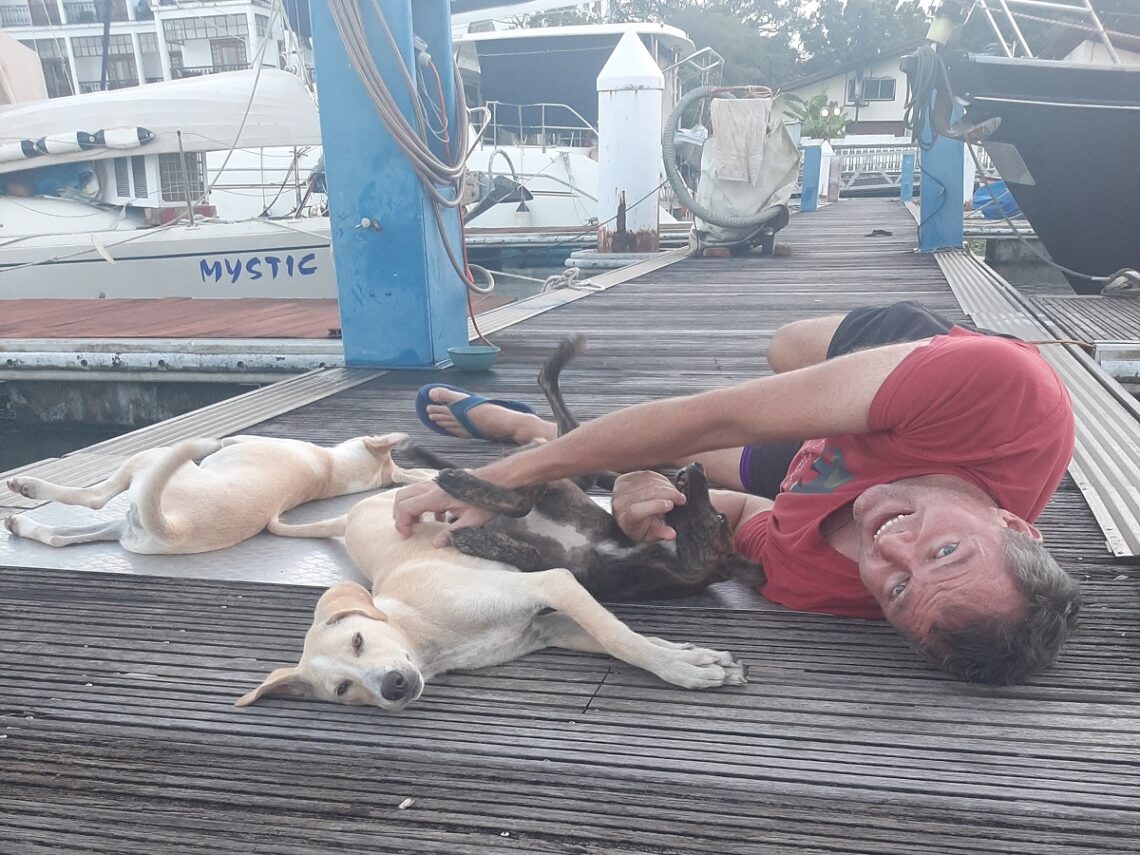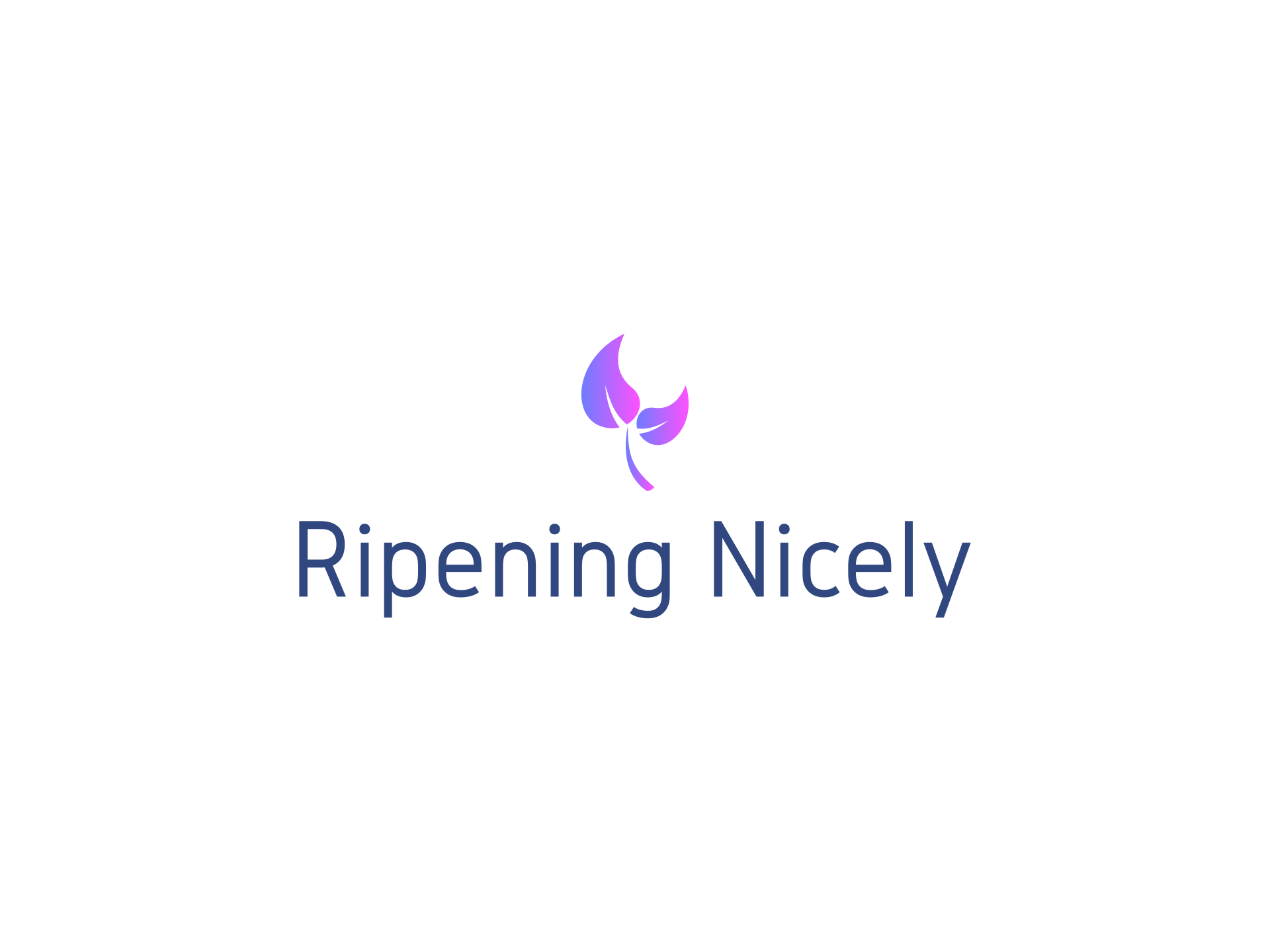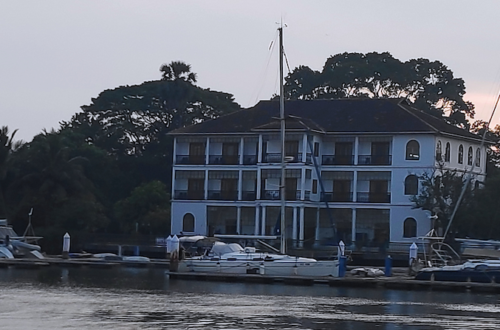
Money Money Money!
I’ve been brought up to treat money as a personal matter and so it feels a bit strange writing this blog. But, since we get a lot of “I wish we could afford to do what you’re doing” and “we’ll have enough cash only after the next mortgage is paid off” comments, the purpose is to show that an alternative lifestyle can be within reach to many, with the right approach.
It’s very easy to get caught in the big hamster wheel of corporate life and this was especially true living in Dubai. I remember in particular a dinner with senior corporate colleagues, and each of the wealthy, powerful men around the table were trying to outdo each other with their plans to work hard for ‘a few more years’ to get a large house in their home country and another on a golf course somewhere exotic. This was a group of people used to working in luxury hospitality and so nothing they were talking about was cheap. I had to work hard to not show my astonishment at how different their recipe for happiness was from mine.
“Happiness is greater than or equal to, your perception of events in your life, minus your expectation of how life should be”. Mo Gawdat – author of Solve for Happy.
I recently read the above quote presented as a formula. I’m pleased that I’d come to a similar approach some years back, after all, there will always be someone living in a bigger house, driving a fancier car, splashing more cash than you. Rather than trying to outdo others, a more certain path to happiness is to derive greater satisfaction by adjusting your perception of things in your life.
Our route to happiness has become based less on the acquisition of material things and more on the experiences that we are able to have. For us, the key is abandoning a consumer based lifestyle and achieving a more minimalist one that enables us to give up the stress we both endured previously in corporate life. This resulted in us making the decision to cut loose from conventional living, to living on board Aroha and sailing to South East Asia, while we take time out for ourselves.
Buying Aroha herself cost about US$150,000 back in 2006. I paid half cash and financed the balance over two years, although my bonus was good that year and I paid the balance off early. It seemed like a crazy amount of money at the time but I guess like many things, you have to balance ‘cost’ with ‘value’. Using any boat sparingly mostly at weekends feels like a big money pit, but living on board, she now feels like pretty good value. Conversely, there were seasons in Dubai where we used Aroha so sparingly, each outing literally cost thousands of dollars.
Considering that “my previous boat” was a 16’ hobie cat that I bought off a good mate for £350, this was a huge step up for me and I didn’t want to put myself too far into debt. When looking for my boat that would become Aroha, there were very limited not-too-old second hand boats available, and those that were were priced to reflect the high demand at that time. So, I looked at new boats, at the three main production yacht builders; Bavaria, Beneteau and Jeanneau. These guys focus on producing a large number of boats, thus keeping the unit prices very competitive. Although very happy with Aroha, in retrospect I wish I’d also considered Dufour and Hanse, who are also within the same price ballpark.
After settling on the Bavaria brand, driven by a couple of models I’d seen first hand and also videos of their largely automated assembly line, I traveled to Athens where I’d arranged to view a Bavaria 37’ Cruiser and a Bavaria 39’ Cruiser which were in charter there. My mum flew down from London and we had a fleeting glimpse of the jet set lifestyle, viewing yachts in Athens and Lefkada. In the end I couldn’t justify the EUR 20k price hike for the extra 2’ length and I actually much preferred the 37’ layout, so the decision was made! I flew back to Dubai and placed an order for a new Bavaria 37 Cruiser. You can check out Aroha’s Arrival and launch here https://ripeningnicely.com/2009/05/09/reflections-on-arohas-arrival/
As the kids headed off to university one by one, our dream of escaping the corporate rat race slowly morphed into a more solid plan.
In the six or so months prior to departure into our new lifestyle we spent some serious money. This was to better equip and upgrade the boat from both safety and comfort perspectives. I think subconsciously I didn’t keep track of it at the time because I knew the total would scare me! In preparing this blog I flicked through my invoices and found that upgrades came to about US$26,000 (solar and upgraded house batteries $14,500; reverse osmosis watermaker $5,500; marine AC $5,000; plus UV water treatment and other little bits and pieces), and maintenance about US$18,000 (significant Volvo engine service $3,500; sail drive diaphragm replacement, anti-fouling and other out-of-the-water jobs $6,500; standing and running rigging replacement $8,000).
Spending US$44,000 on a yacht that’s depreciated to less than US$100,000 value before even leaving the dock feels like a bit of a hit and you definitely have to take a long term view to “get your money’s worth”. When we first shared our “sailing into the sunset” plan with friends a couple of years ago, I was surprised that a couple asked if we’d be replacing Aroha. Maybe I was even offended – after 12 years Aroha is now part of the family! But when you look just at the dollars and sense, selling her and starting afresh would have been perfectly feasible.
The good news is that once you’ve spent that money up front, the cruising life can be pretty affordable. I had a conversation with one of my cruising mentors a few years back who told me that common cruising convention is that US$12,000 / year is the bare bones budget (no health insurance, only third party insurance for the boat, do all maintenance yourself, no flights home, no marinas, seldom eating out…), and US$24,000 / year is the “reasonable comfort” budget which eases the above restrictions. Considering that we don’t want to skimp on the comfort and convenience of marinas, want to travel inland a reasonable amount (which also necessitates leaving Aroha in a marina for security), and have family at opposite sides of this planet, we settled on US$36,000 / year.
When we sailed to the Maldives, Sri Lanka and Chagos for six months in 2009, once we’d stocked the boat with equipment and food, day to day life was very affordable. One of the big differences then was that since there weren’t any decent supermarkets on that route, we front loaded the food expense by stocking up on 90% of our groceries before we left. Significant expenses then were the Maldives cruising permit, scuba diving in the Maldives and satellite phone air time which came to around US$4,000. But after that, life at anchor was cheap- from memory we left with just US$1,000 cash, and even returned with some change.
I’m a bit embarrassed to confess that I didn’t do any sort of breakdown of our proposed US$36K annual budget until I started to write this blog, but I think this will work out as below. There’s a reasonable amount of padding in the travel section as many cruising yachts don’t spend that much time (and money) in marinas or travelling inland. Scuba diving gets its own cost line – we decided about a year before setting off against getting a small dive compressor on Aroha and decided to keep the money separate to remind ourselves that we had a lump of money that we didn’t spend in 2019 (and ongoing maintenance costs) that we can spend at dive centers.
- $8,000. Fixed expenses. (Boat insurance, health insurance, maintenance allowance).
- $11,000. Travel expenses. (Marinas for 1/3 of the time, travelling inland for 1/4 of the time, bureaucracy, fuel).
- $8,000. Living expenses. (Food, entertainment, communication).
- $3,000. Scuba diving.
- $6,000. Annual trips home.
I must also confess to thinking that US$36,000 seems like quite a lot of money for what is supposed to be a fairly low key lifestyle, but conversely, none of the above breakdown seems at all extravagant. It’s a lot less than we used to spend in our previous life just “existing”- in fact, it’s less than the rent we used to pay for our small Dubai apartment! We are generally far more cautious with our money than we were in the glory days with healthy regular incomes. For example, our daily budget to travel inland around India was $50 per day- totally achievable.
Once we’d set our mind on wrapping up our Dubai life into life afloat, many decisions became money-into-time calculations – savings from living in a more modest apartment converted into X years cruising, a good bonus converted into Y years cruising, etc.
Covid has of course thrown a spanner in the works. We have been stuck in a marina since December last year but thankfully it’s a very good value one, and considering that we haven’t traveled inland since March, the cost is offset. At least we’re ahead of budget…
Follow and like us to be notified of future blogs!






2 Comments
Jacqui Oneill
Good break down Bryan yes it makes you think doesn’t it that for years you can be following a path to happiness that does the exact opposite but you don’t give yourself time to even understand what is going on, I think a lot of people if they gave themselves the time to evaluate would be able to follow their dreams. Good read thanks for the shove towards happiness
Anne
Interesting expenses breakdown Bryan. And what an apt quote at the start.